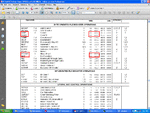PA3040
Advanced Member level 3

Dear All,
Reference MCU is 16f877a
Please see picture
In this picture the locations A and B and C has relation ship. am I right?
I mean
ADDWF ia 6 bit OPCODE
00 0111 is the machine code after decode by MCU
Therefore
ADDWF = 00 0111
as per code list in INSTRUCTION SET in PIC 16f877a data sheet, I think it not needs six bit, I think can manage by four bits
am I right

Reference MCU is 16f877a
Please see picture
In this picture the locations A and B and C has relation ship. am I right?
I mean
ADDWF ia 6 bit OPCODE
00 0111 is the machine code after decode by MCU
Therefore
ADDWF = 00 0111
as per code list in INSTRUCTION SET in PIC 16f877a data sheet, I think it not needs six bit, I think can manage by four bits
am I right



